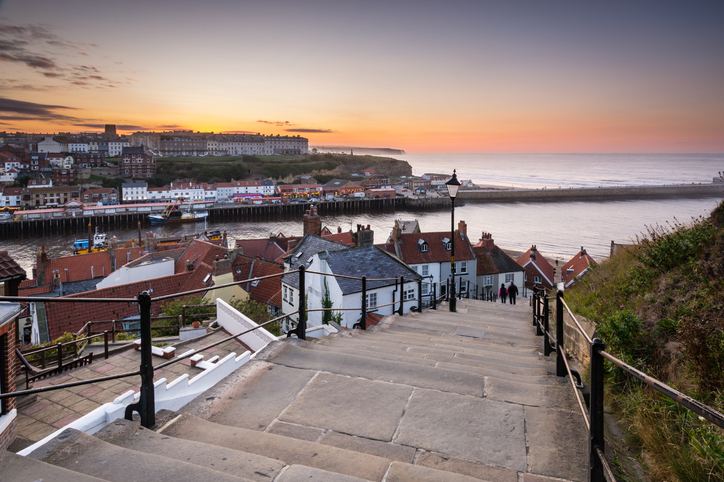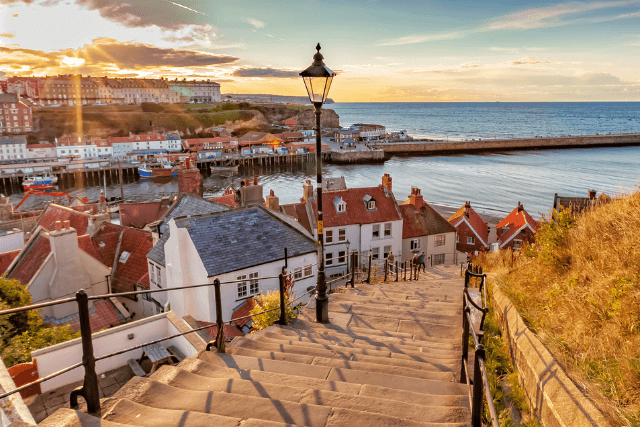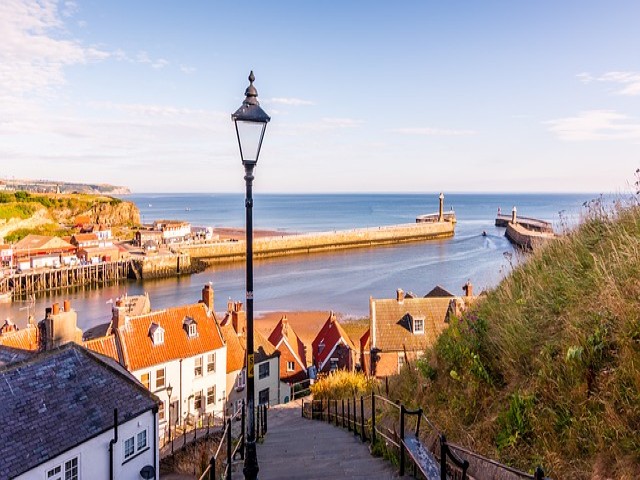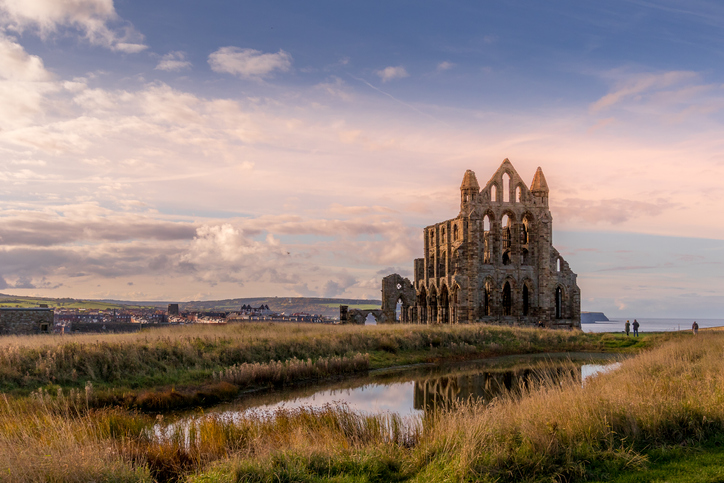Journal
Whitby’s 199 Steps
Whitby's 199 Steps are a test of your endurance with a fabulous reward at the end. If you’re looking to scale the famous steps in Whitby, you’ll be greeted by stunning views of the coast and clifftops – plus full access to Whitby Abbey.
Among all the things to do in Whitby, the 199 Steps is top of most tourists’ lists. But before you get your walking shoes on, grab a lemon top ice cream and find out more about one of the best tourist attractions on the Yorkshire coast.
Here’s our guide to the 199 Steps in Whitby…
The Famous Whitby Steps

If you’ve never come face to face with the 199 Steps in Whitby, you’re in for a shock. Reaching the top of these is no mean feat, but when you do, you’ll be treated to the Grade I listed Church of St Mary.
The number of steps in Whitby is up for debate, too. Some records list 198 steps, and others 200 – with the final step up for debate. Keen hikers may consider the ‘top’ the final step, while stricter walkers won’t count this.
Records from centuries ago make for even wobblier estimates, with some 19th Century texts citing 194 steps. In the year 1761, local preacher John Wesley was said to have counted 191 steps.
Of course, in the modern day, the 199 Steps have undergone several renovations. One of these was to include Roman numerals on every tenth step. Installed in 2004, these handy guides have put a stop to arguments among visitors.
History of the 199 Steps in Whitby

You might also find the 199 Steps in Whitby referred to as the ‘Church Steps’ or ‘Jacob’s Ladder’. Both of these are biblical or religious references. The ladder leads to the Church of St Mary, which has been in existence since the 12th Century. First records of the steps began to crop up in 1370.
Jacob’s Ladder, meanwhile, is a reference to the ‘ladder to heaven’, which featured in Jacob’s dream in the book of Genesis. As for the steps’ purpose, there are two main stories. Some say the 199 Steps are a test from St Hilda to measure Christians’ faith.
Their more practical purpose is a little sadder. The steps would be the final journey that deceased loved ones would take in their coffin on the way up to St Mary’s Church. Throughout history, men have taken male friends’ coffins, women have taken women’s, and children have carried children’s coffins up the steps. There were alternative routes to the top, but it is said that families preferred this ‘final journey’.
The tradition went on for hundreds of years, with the last coffin carried up the steps dating back to 1933. It belonged to Reverend George Austen.
Why are there 199 Steps in Whitby?

There’s more to Whitby than just the 199 Steps. Indeed, you’ll indulge in a little history and culture as you make your way up them. First up, the steps have not always been as they are today.
Up until 1774, each step was brightly coloured and made from wood. However, an act was passed that year, requiring owners to pave the route. They brought in 103 tonnes of stone from a nearby quarry at Sneaton, making up the steps we see today.
You may also notice benches at intervals along your journey. These are great for modern-day walkers, but throughout history they were used by tired pallbearers to rest. Of course, the pallbearers had the alternative option of taking the ‘Donkey Road’. This cobbled track was the other, far more pleasant thoroughfare between the east side of the harbour and the churchyard.
If you don’t fancy taking on Whitby’s 199 Steps, you can try the Donkey Road instead. This is actually Grade I listed, and is seldom as busy as the steps themselves.
Let’s not forget the steps’ role in popular culture, either. In Bram Stoker’s 1897 novel, Dracula, the eponymous character makes his way up the 199 Steps following a shipwreck. Of course, at this point in the novel, he comes in the form of a black dog. Perhaps the steps are easier on four legs, not two!
The 199 Steps Today

This free attraction in Whitby has continued to evolve from the 1300s through to the present day. In 1988, King Charles III (then known as Prince Charles) contributed to a £12,000 renovation project. Later, in 2004, the bottom end of the steps was discovered to be sinking! The steps were declared unfit for health and safety compliance.
Whitby locals rallied together for a public appeal, attracting funds from 199 donors. Each donor contributed £1,000, helping to make the steps safe for public use once again. Today, you’ll spot small circular discs with Roman numerals to help count the steps, so it’s best to start brushing up on them if yours are a little rusty.
Thankfully, there are railings from top to bottom, making the steps safe for those fit, healthy and mobile. If you want to see Whitby Abbey without climbing the steps, the area is fully accessible. Run by English Heritage, the site offers a lift to the main Abbey, as well as ramps and parking for disabled visitors.
Tips for Climbing the 199 Steps, Whitby
- Plan your route – do you want to visit the church or Abbey at the top? Would you be better on the Donkey Road?
- Make use of the benches. No longer for pallbearers, these are a great place to have a rest and take some stunning photos of the Yorkshire coastline.
- Bring the dog if you want to. Make sure they can handle upwards treks, and keep them on a lead if you’re visiting the Abbey.
- Wear comfortable shoes – whether it’s 191 or 200 steps, it’s difficult on the legs!
Has our history of the 199 steps in Whitby got you wanting to visit Yorkshire? Experience this beautiful seaside town with long walks, shopping and festivals, all with a comfortable retreat to call home. Explore our range of Whitby holiday cottages here.